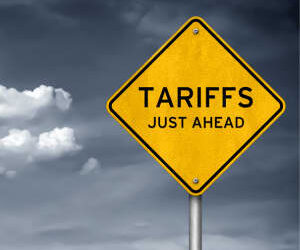The last several years have been trying for emerging markets, with 2015 marking the fifth consecutive year of decelerating growth. As the immediate recovery post-global financial crisis (GFC) was exceptionally strong, some deceleration was always in the cards. Over the last few years, however, the normal cyclical slowdown has been aggravated by severe and interlinked shocks. However, despite the severity of the shocks, they have not triggered another systemic emerging market (EM) crisis along the lines of those seen in the 1990s. Instead, these shocks have so far resulted mostly in slower economic growth, rather than the severe crisis that appears to be priced in. We believe the reason for this surprising resilience lies in the lessons that EMs have learned from previous financial crises, and which allowed many, albeit not all, of them to build substantial buffers and safeguards.
Perhaps the most important step that emerging markets have taken to reduce their vulnerability to financial crises is the remarkable deepening of domestic financial markets over the past decade. In many countries, the development of a reliable domestic investor base has benefited from the rise of a broad middle class. For example, the total assets held by domestic insurers and pension funds in emerging markets have swelled from US$2.3 trillion in 2005 to around US$6 trillion in 2013, boosted by the expansion of the insurance sector in EM Asia and by pension funds in Latin America.1 Mexico stands out in its reduced reliance on the banking sector as a source of domestic funds. This transition toward more balanced funding has improved financial resilience. Domestic institutional investors can be a stabilizing force when asset prices collapse to levels that are clearly out of line with fundamentals—in the past, the lack of a strong domestic investor base often magnified the consequences of financial volatility.
Of course, financial risks also vary considerably across regions and countries. However, a few common themes do seem to hold. First, contagion risk seems to have diminished. The same transmission mechanisms through financial linkages, trade and competitive currency devaluations have been operating in the past several years, but they have not overwhelmed economies in such a violent manner as in past episodes. Second, most recent crises have been relatively contained currency crises, as in the case of Brazil, without immediately cascading to the banking system. Overall, the lines of defense have widened; policymakers in many countries have more options and time to react when volatility picks up and their economies come under pressure. Although debt levels have increased in emerging markets since the GFC, these developments point to some degree of improvement in the robustness of the financial architecture in many countries and suggest a greater level of resilience at the global level than in the past.
Recognising the major changes that EMs have experienced over the past decade, we have laid out a new framework to assess the investment risks and opportunities in individual markets. Our framework extends beyond the traditional indicators of external vulnerability, recognising the much greater importance of local debt markets. Our framework therefore focuses on the strength of domestic demand, the quality of macroeconomic policies, and the extent to which individual countries have learned the lessons of past crises.
Our case studies illustrate some aspects of the research the group undertakes in analysing individual countries, together with the scoring for each. To read our detailed analysis on the countries we have picked – Mexico, Brazil, Indonesia and Malaysia – visit http://www.franklintempletonglobal.com/gms/emerging-markets
Global Macro Shifts is a briefing on global economies featuring the analysis and views of Dr. Michael Hasenstab and senior members of Templeton Global Macro. Dr. Hasenstab and his team manage Templeton’s global bond strategies, including unconstrained fixed income, currency and global macro. This economic team, trained in some of the leading universities in the world, integrates global macroeconomic analysis with in-depth country research to help identify long-term imbalances that translate to investment opportunities.
Issued by Franklin Templeton Investments Australia Limited (ABN 87 006 972 247) (Australian Financial Services Licence Holder No. 225328). The comments, opinions and analyses are the personal views expressed by the investment manager and are intended to be for informational purposes and general interest only and should not be construed as individual investment advice or a recommendation or solicitation to buy, sell or hold any security or to adopt any investment strategy. It does not constitute legal or tax advice. The information provided in this material is rendered as at publication date and may change without notice, and it is not intended as a complete analysis of every material fact regarding any country, region market or investment.





